The 6 days Marangu Route follows the Marangu Route; the most popular and oldest route up Mount Kilimanjaro. It is the most preferred route because of the permanent sleeping huts and because it takes fewer days to reach the summit with a steep incline. It has a lower success rate compared to other routes, a lower summit success rate, and a lot of traffic, especially during the dry season. This is the original Kilimanjaro route that is favored by many hikers although it has the lowest Summit success percentage and this is because you are not given enough time to acclimatize. The route approaches the Summit from the south-east side of Kilimanjaro, the climb is not a difficult one, covers a distance of 45 miles/72 kilometers, and is one of the least favored when it comes to scenic views since the same route is used for both the ascent and descent.
The Marangu route is famous among hikers because it is seen as an easy climb making it a crowded affair. If you ever want to avoid crowds, the Marangu route is not for you.
When you get to the Kilimanjaro International Airport, a guide will be waiting to transfer you to the accommodation where you will spend the night. After resting, the guide will brief you on what to expect, check your gear, and hire out what is needed for the next day in case you do not have it.
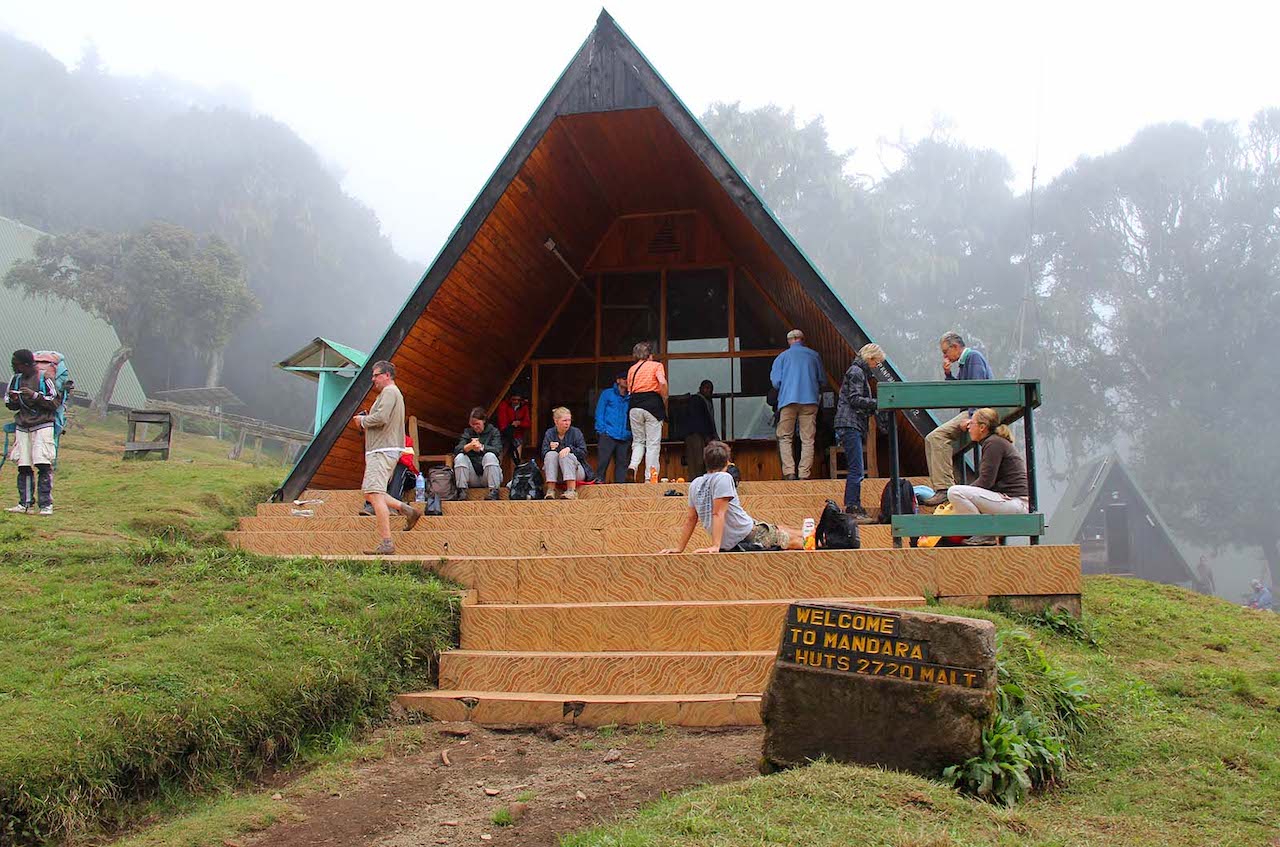
Arrival into Kilimanjaro Airport - Transfer to Moshi
You will be met by our professional guide and driven to your hotel in Moshi, where a small briefing will be carried out and an inspection of all the climbing equipment will take place. In case some equipment is missing, it can be hired on this day to avoid the last-minute hustle.
Moshi or Marangu, Hike to Mandara
Altitude: 818m
Duration: 4 to 5 hours
Zone: Rainforest
Elevation: 1905 m to 2723 m
Distance: 8.3km
Accommodation: Mandara Hut
Meals: breakfast, lunch, and dinner
The day starts with a short 45-minute drive from Moshi to the Kilimanjaro National Park Gate through Machame village. All hikers are supposed to sign in at the gate where the permits are issued before the start of the journey. The lower elevations are always slippery, so you will need trekking poles and gaiters. Look out for the different bird species, blue monkeys, and colobus monkeys as you hike through the lush forests, take a walk around the Maundi crater, relax, and enjoy the scenery before resting at the Mandara hut.
Mandara huts to Horombo huts
Altitude: 998m
Duration: 6 to 8 hours
Zone: Mooreland
Elevation: 2723 m to 3721 m
Distance: 12.5km
Accommodation: Horombo Hut
Meals: breakfast, lunch, and dinner
After a hefty breakfast, the hike up Mount Kilimanjaro resumes, taking you through the rainforests into the heathland and moorland as you climb higher. This is also the first time that you will have views of the two peaks, Kibo and Mawenzi. Some of the scenes that welcome you on this route include the small shrubs, giant grasses, and lobelias. Arrival at the Horombo huts, right beneath the Kibo summit viewpoint, is late afternoon, and this is when the temperatures begin to drop.
Acclimatization Day, at Horombo huts
The third day is for resting at the Horombo, and this is to help you achieve acclimatization. You will be taken on an acclimatization walk around the camp, the base of Mawenzi peak, and the zebra rocks before returning to the huts to relax and prepare for the next day’s hike. Relax at the camp, enjoy the meals, and catch all the much-needed rest.
Horombo hut to Kibo hut
Altitude: 993m
Duration: 6 to 8 hours
Zone: semi-desert
Elevation: 3721 m to 4714 m
Distance: 10.5km
Accommodation: Kibo hut.
Meals: breakfast, lunch, and dinner
Day four will take you through the heathlands and into the semi-desert zone after breakfast. You get to go through the large saddle that connects the two peaks, which are Mawenzi and Kibo. Lunch is served, and later you can examine the Kibo summit from the camp, where a night will be spent as you prepare your gear and kit for the summit ascent.
Kibo hut to Uhuru Peak (the summit) - Descend to Horombo hut
Gained altitude: 1181 m.
Lost altitude: 2174 m.
Duration: 5 to 7 hours of ascent and 5 to 6 hours of descent
Zone: Glaciers
Elevation: 4714 m to 5895 m
Distance: 6.25km up and 15. 5 km down
After a light meal, the ascent usually begins at midnight, and the goal is to reach the summit before or right after dawn. Flashlights are needed to light your way, but you need to note that this is the most difficult part of climbing the mountain because you have to balance the cold, focus on the hiking route, and deal with the dropping level of oxygen. Guides will keep on saying pole-pole,” and this means that you need to take it slow to reach the summit successfully.
When you get to Gilman’s Point, which is found on the crater rim, you get to see the best views of the sunrise. You have almost an hour to ascend to Uhuru Peak, which is the highest point of the mountain, after encountering several layers of snow. After taking several photos and celebrating, the trek down to the Mweka camp begins with a stopover for lunch. A well-deserved rest with warm meals and enough oxygen will be waiting for you at the Horombo camp.
Horombo, descend to Marangu Gate, Transfer to Moshi / Arusha
Altitude lost: 1816 m.
Duration: 6 to 7 hours
Zone: Rainforest
Elevation: 3721 to 1905 m
Distance: 20km
Meals: breakfast, lunch, and dinner
The last day of descending Mount Kilimanjaro begins with a hefty breakfast with the crew that has been helpful throughout the hike. The descent begins with a stopover lunch at the Mandara hut before continuing to the Mandara Gate, where you will sign out. After receiving your certificates for successfully climbing Mount Kilimanjaro, our driver guide will then drive you back to the hotel for a celebration. A night will be spent in Moshi at the hotel before being transferred to the airport for your flight if you do not have other safaris in Tanzania planned.

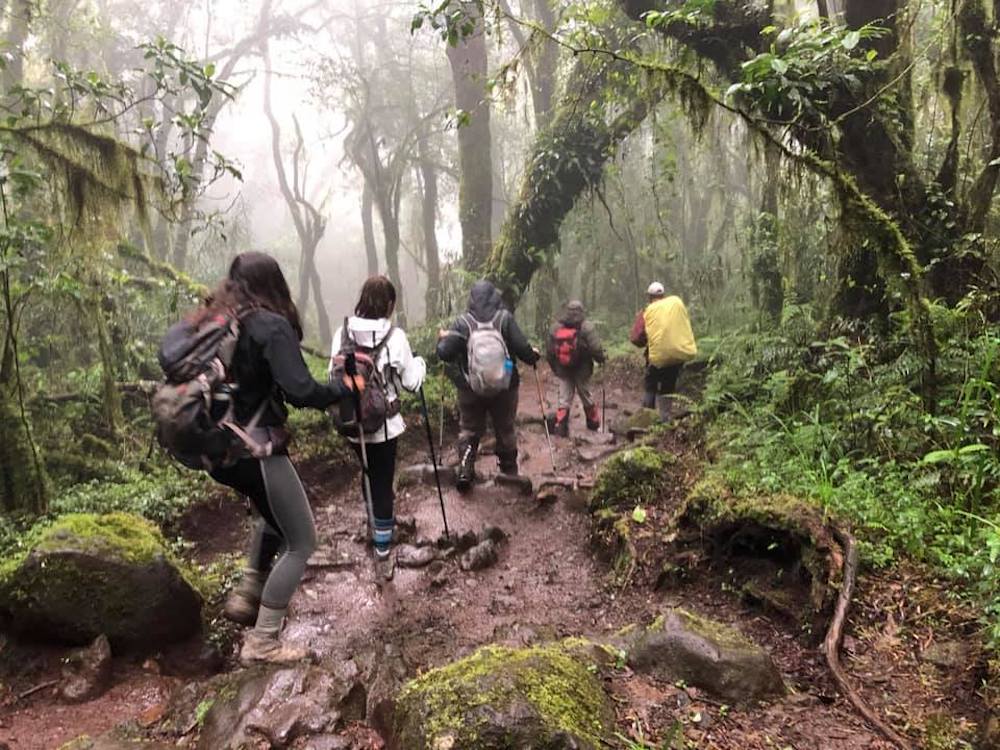
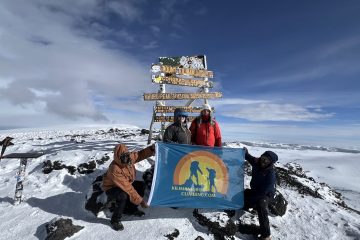
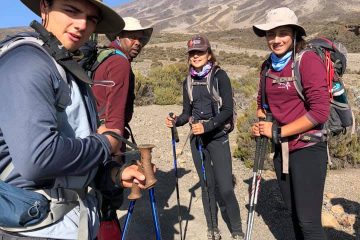
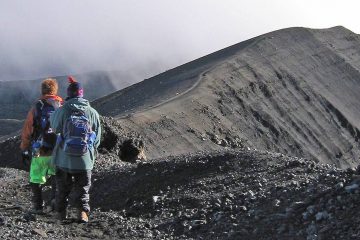
Tour Reviews
There are no reviews yet.
Leave a Review